KCardTM and KTagTM
Our product suite consists of two components: the smartcard themselves (KCardTM and KTagTM), and the API that enables your tablet to read our smartcards.
kcardTM
|
ktagTM
|
| dimensions | |
| 63mm × 88mm | 51mm × 51mm |
| thickness | |
| 0.9mm | 1.8mm |
| printing methods | |
| UV | UV |
| unique ids | |
| Up to 600 | Up to 60 |
| batteryless | |
| yes | yes |
| positional tracking | |
| yes | yes |
| compatibility | |
| iPad (2018) iPad Pro (2nd Generation) iPad Air | iPad (2018) iPad Pro (2nd Generation) iPad Air |
kcardTM |
ktagTM |
|
 |
 |
|
| dimensions | 63mm × 88mm | 51mm × 51mm |
| thickness | 0.9mm | 1.8mm |
| printing methods | UV | UV |
| unique ids | 10,000+ | Up to 50 |
| batteryless | yes | yes |
| positional tracking | yes | yes |
| compatibility | iPad (2018) iPad Pro (2nd Generation) iPad Air | iPad (2018) iPad Pro (2nd Generation) iPad Air |
faq
Are smartphones supported?
KTagsTM are supported on the iPhone. KCardsTM are not.
What platforms are our smartcards supported on?
We have SDKs for iOS, Android, and Unity, which means that most platforms are supported. There is also a hardware quality consideration. Please see compatible devices for reference.
Can I buy blank smartcards from you and I handle the printing?
Yes, but we strongly advise that you consult us before going for this option as we have experience in the exact printing method that works best on our card materials.
Why don’t your KCardsTM/KTagsTM work on my tablet?
Certain tablets and smartphone models come with a palm rejection “feature” that interprets certain touch signal pattern as “palms” and would refuse to react to protect the device from accidentally activated by a palm landing on the screen, even when this feature is “turned off” from the settings menu. We are working on a solution (for our App-based solution) to get around this problem. There is currently no known solution to address this issue to use our Web-based solution yet.
My project needs more than 10,000 unique IDs, what can you offer?
We have solutions to get around this issue but this may mean restricting the touchscreen devices to a certain small number of brands and models. Stay updated via our newsletter for the latest developments.
Your Web-based solution is sluggish. Why is that?
Our Web-based solution first registers signals recorded in your tablet browser, and sends this information back to our API server for interpretation, after which the results are sent back to your tablet. As you can see, this process could be affected by the Internet latency between your tablet location and our server. We recommend developing an App-based solution for situations where response time is of high importance.
Why does my KCardTM/KTagTM not work with my tablet with a screen protector?
Certain screen protectors, especially with thick ones, may block signals transmitted from KCard onto the screen. An analogy would be you wearing gloves and trying to use the tablet — most of the times this wouldn’t work. Hence we do not recommend using your KCards/KTags on tablets on screen protectors.
Do KCardsTM/KTagsTM need batteries or need to be recharged?
Nope. KCardsTM and KTagsTM do not need power to operate.
Will KCardsTM still work if the user updates to newer Android / iOS / Windows versions?
Our KCardTM SDKs were written using the most fundamental function calls in these operating systems. We are confident that they will work with newer OS versions.
Do you have a paper version of KCardTM?
Not yet. Stay updated via our newsletter for the latest developments.
Can you make KCardsTM thinner?
Our manufacturing process is currently set at thickness of 0.9mm. If there’s a specific project that requires a different thickness, please contact us.
